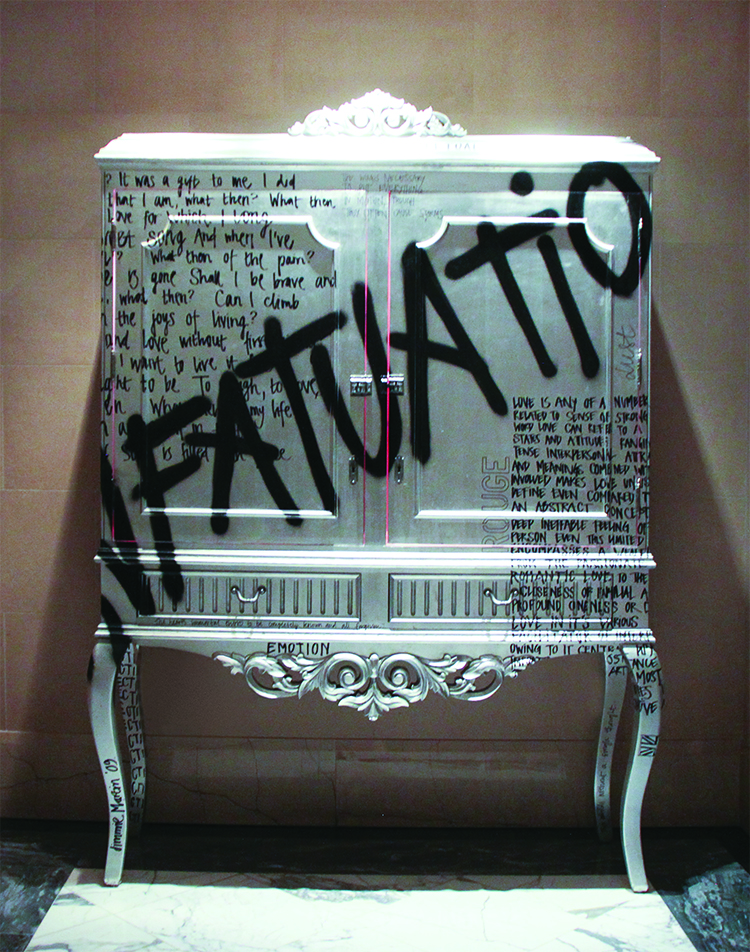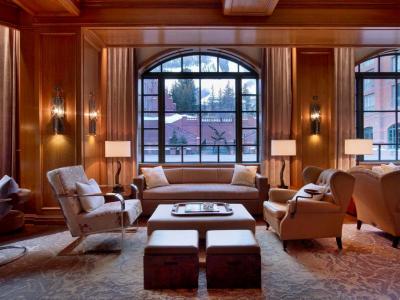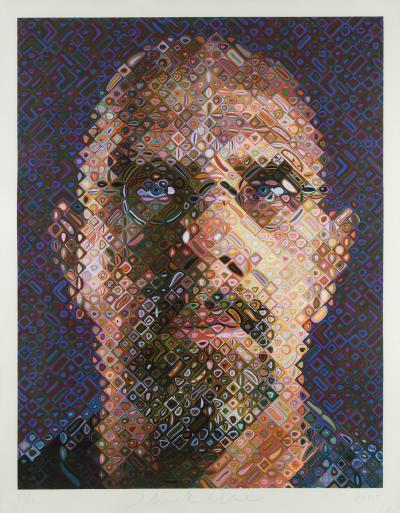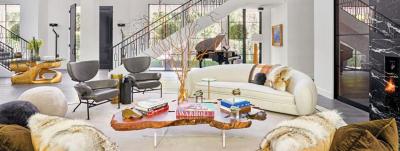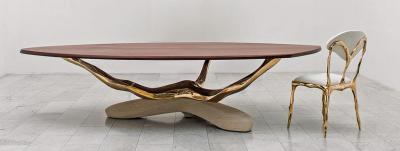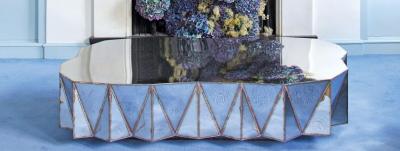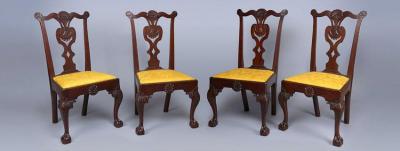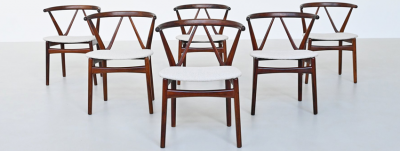Bringing Contemporary Flair To The Surrey Hotel
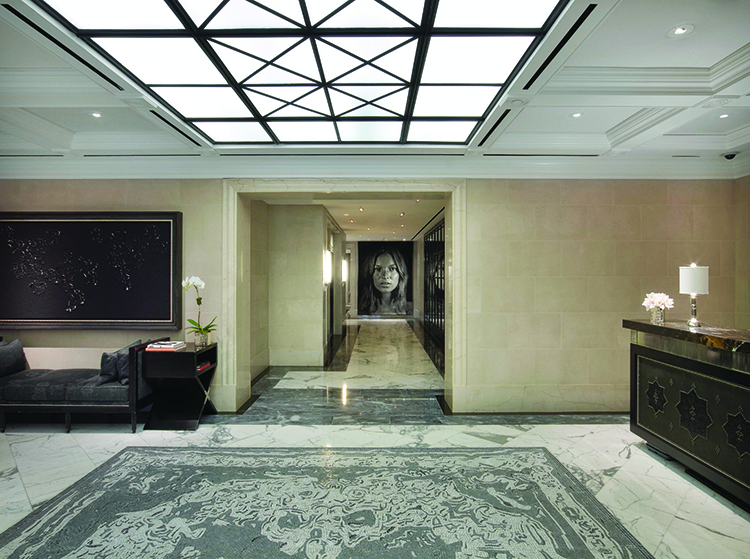
- Fig. 2: Surrey lobby with Chuck Close’s Kate, 2007 jacquard tapestry. For almost four decades, Chuck Close has created portraits from tonal grids of fingerprints, pointillist dots, brushstrokes, paper pulp and countless other media. It was only natural that the artist’s ambitions led him to tapestry, a classical and difficult medium possessing Close’s signature tension between abstracted units (woven thread combinations) and a legible, unified surface.
This article was originally published in the Anniversary 2015 issue of Antiques & Fine Art magazine, which is affiliated with Incollect.
It was the Roaring Twenties. Women bobbed their hair and hiked their skirts, and an estimated 100,000 speakeasies flourished in New York City in the face of Prohibition. Yet there was an oasis of calm: Frederick Law Olmsted’s Central Park. Overlooking the leafy landscape on the Upper East Side, the private homes of the privileged rose with the stock market and multiplied into elegant neighborhoods. In 1926, a small residence hotel with a Beaux-Arts façade opened at 20 East 76th Street and seamlessly blended into the neighborhood. The Surrey was luxurious and discreet; qualities movie actresses Claudette Colbert and Bette Davis and other celebrities appreciated. Later, John F. Kennedy made the popular residence his home in the city (Fig. 1).
But by the beginning of the twenty-first century, the Surrey had lost its luster, until new owners launched a $60 million, 14-month-long renovation. Debuted in 2009, the aura of the 17-story, 190-room hotel‘s historic past remains intact, but interior designer Lauren Rottet has added a contemporary flair, helped along by the installation of thirty-one original works by international artists. Silent films, the most popular entertainment at the time the original Surrey opened, inspired her calm palette of cream, grey, sepia, black, and white. The designer shopped Parisian flea markets for the antique prints and watercolors that adorn the lobby and halls. Lavishly illustrated art books are at hand in the waiting areas and guest rooms, which feature a video tour of the art collection.
The signature artwork, a wall-sized tapestry portrait by Chuck Close of the fashion model and designer Kate Moss, is located in the hotel lobby (Fig. 2). It’s the first thing guests see as they cross the threshold, and it establishes the hotel’s blending of old with new. The subject and the artist are contemporary; the medium of tapestry is classic.
Photographic prints of two of conceptual artist Jenny Holzer’s xenon projections are mounted behind the leather-clad reception desk. “You Are My Own” and “But The Myth of Love,” are titled with quiet sans serif block letters in contrast to the brash black letters scrawled diagonally across the front of “Graffiti Armoire” by the London-based art-furniture makers Jimmie Karlsson and Martin Nihlman, professionally known as Jimmie Martin (Fig. 3). The ornate cabinet was exhibited in the VIP lounge of the 2011 Armory Show. The presidential suite includes a Jimmie Martin chaise lounge decorated with a recipe for the “perfect Manhattan.”
Also in the lobby are notable works by Pop artist Claes Oldenburg and South Africa artist William Kentridge. Oldenburg, best known for his soft sculptures of common objects, is represented here by a 1991 painting Study for a Sneaker Lace—White. The Kentridge installation is enclosed in a glass case near the bar entrance (Fig. 4). The untitled work presents a figurative painting in an antique book transformed into a modern video piece. It’s a favorite of Rottet, capturing perfectly the “hotel’s aesthetic of old meets new.”
There’s art throughout the hotel: a photographic portrait of painter Frida Kahlo by Imogen Cunningham; a charcoal on paper drawing of an artist’s studio by German painter Matthias Weischer; two bold etchings by Richard Serra from his 2009 Promenade Notebook Drawing series; and a 1997 wood engraving with embossment on handmade paper, 50-Foot Print, by Mel Bochner. Other renowned artists are represented in the guest rooms, including Jonathan Borofsky in the penthouse and Richard Serra in the presidential suite.
The Pleiades Bar evokes the Twenties and Thirties, when it was a popular watering hole for Manhattan’s creative types. When decorating the bar, Rottet pictured it as it was in its romantic past, with “people sitting in the bar, smoking long cigarettes and sipping cocktails.” To achieve that ambiance she lined a booth with diamond-stitched upholstery that suggests the classic Coco Chanel handbag. Above the banquet, she mounted a suite of four Donald Sultan digital prints titled Smoke Rings (Fig. 5). The hotel’s Michelin starred dining room, Café Boulud, is presided over by executive chef Gavin Kaysen.
Located where Madison Avenue meets Museum Mile, the Surrey is ideal for shoppers and for walkers who wish to visit galleries and museums, including the Guggenheim and the Metropolitan Museum of Art. The Cornelia Spa offers a full range of services, and the English-style roof garden available to hotel guests only is a quiet retreat, while offering panoramic views of Manhattan. For more information visit www.thesurrey.com.
Shirley Moskow is a Boston-based writer on travel and the arts.















